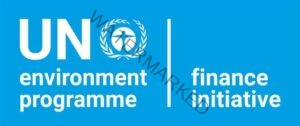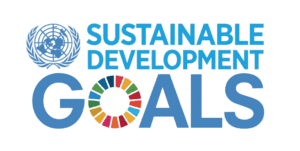 Positive Peace Report 2024: Building Sustainable Societies
Positive Peace Report 2024: Building Sustainable Societies
The Positive Peace Report 2024 by the Institute for Economics & Peace (IEP) builds upon insights from the Global Peace Index 2024, emphasizing that peace is more than the mere absence of violence. Instead, it highlights the importance of Positive Peace—a framework encompassing attitudes, institutions, and structures that foster and sustain peaceful societies. This concept not only promotes societal harmony but also serves as a driver for social development, economic growth, and ecological balance.
NOTE: Besides this Global Positive Peace Index (PPI) 2024 Report, you may also need to through the Global Peace Index (GPI) 2024 Report, which may be accessed using this link. Thank you
Understanding Positive Peace
Positive Peace represents an environment conducive to human flourishing by embedding systemic stability and resilience. It is defined through eight Pillars of Positive Peace that collectively measure societal wellbeing. These pillars include:
Well-Functioning Government
Sound Business Environment
Equitable Distribution of Resources
Free Flow of Information
High Levels of Human Capital
Acceptance of the Rights of Others
Low Levels of Corruption
Good Relations with Neighbors
Together, these pillars create a roadmap for societal growth and resilience, allowing communities to thrive amid challenges.
Key Findings from the Report:
1. Societal Benefits of Positive Peace
Countries with higher Positive Peace scores demonstrate:
Greater resilience to political, economic, and environmental shocks.
Stronger economic performance, including robust GDP growth, higher household consumption, and increased foreign investment.
Improved wellbeing, happiness, and social cohesion.
Higher productivity and better access to information.
Lower levels of corruption and inefficiency.
2. Predictive Capabilities
Positive Peace serves as a predictive tool for identifying potential societal disruptions. The IEP’s Positive Peace deficit model reveals that 90% of countries predicted to experience substantial declines in peace eventually did so. Conversely, countries with surpluses in Positive Peace often experience long-term improvements in societal stability.
3. Economic Impact
Economically, countries with improved Positive Peace scores witnessed faster GDP growth, lower inflation volatility, and stronger international trade performance. The industrial, service, and agricultural sectors also experienced higher growth rates, reinforcing the economic advantages of maintaining Positive Peace.
Trends in Positive Peace (2013–2023):
Over the past decade, Positive Peace has improved by 1%, with significant advancements in access to technology and information. However, the trend has not been linear:
From 2013 to 2019, Positive Peace improved by 1.5%.
Between 2019 and 2022, there was a 0.5% decline due to the COVID-19 pandemic.
Areas of Improvement:
Free Flow of Information improved by 8%, driven by technological advancements.
Equitable Distribution of Resources and Acceptance of the Rights of Others showed significant gains.
High Levels of Human Capital and Sound Business Environment improved marginally.
Areas of Deterioration:
Good Relations with Neighbors declined by 3.3%, reflecting social fragmentation.
Well-Functioning Government and Low Levels of Corruption deteriorated slightly due to reduced trust and transparency.
Social attitudes worsened by 1.3%, fueled by political grievances, misinformation, and reduced press freedoms.
Regional and Global Impacts
Regions like the Americas have experienced the most significant backsliding since 2019, with North America facing the largest decline. The COVID-19 pandemic exacerbated this trend by affecting life expectancy, economic prosperity, and international exchanges.
Despite these setbacks, countries with high Positive Peace levels displayed greater resilience, showcasing faster recoveries in health, trade, and economic stability. These findings underscore Positive Peace’s role in fostering long-term resilience and adaptability.
Systems Thinking and Resilience
The report integrates systems thinking, which views societal systems as interconnected networks. Positive Peace acts as a stabilizing force, enabling societies to resist disruptions and capitalize on opportunities. Its predictive strength allows governments and organizations to anticipate crises and plan interventions effectively.
The Halo framework is central to this approach, helping analyze societal attributes and their dynamics. By understanding feedback loops, policymakers can break vicious cycles and foster virtuous ones to promote development.
Practical Applications
IEP’s Positive Peace framework has been applied in over 75 countries through partnerships, workshops, and ambassador programs. Examples include:
Community resilience programs.
Policy reform initiatives.
Workshops on systems thinking and societal development.
Way Forward:
The Positive Peace Report 2024 highlights the importance of building societal resilience through long-term, system-wide improvements. It emphasizes that peace-building is not a quick fix but requires sustained efforts to improve social, economic, and political structures. Positive Peace serves as both a guiding framework and a predictive tool, helping nations navigate global challenges and harness opportunities for growth.
By focusing on resilience, transparency, and inclusivity, societies can ensure sustained development and prosperity. The findings from this report underscore that investing in Positive Peace is not just a moral imperative but also an economic and social necessity for creating thriving, sustainable communities.
The Positive Peace Index (PPI) 2024, produced by the Institute for Economics and Peace (IEP), provides a detailed evaluation of the factors that contribute to sustaining peaceful societies. Following the release of the Global Peace Index (GPI) 2024, the PPI offers insights into the underlying attitudes, institutions, and structures that foster positive societal outcomes, including economic growth, ecological stability, and resilience.
Predictive Power of Positive Peace
Positive Peace is closely tied to socio-economic resilience, making it a reliable indicator for predicting instability. A model based on Positive Peace deficits accurately forecasted 90% of the countries that experienced significant deteriorations in peace over the past decade. Furthermore, seven of the ten largest declines in the GPI were also predicted by this model, highlighting its utility as an early warning system.
Key Trends in the Positive Peace Index 2024
Overall Improvements and Deteriorations
Between 2013 and 2022:
108 countries improved their Positive Peace scores, while 55 countries recorded deteriorations.
Global Positive Peace improved by 1%, although progress stalled in 2020 due to the COVID-19 pandemic and economic downturns, and has not yet returned to pre-pandemic levels.
Regional Insights
Six out of nine world regions improved in Positive Peace, with notable progress in Russia and Eurasia, South Asia, and Asia-Pacific.
Exceptions included North America, South America, and MENA (Middle East and North Africa), where declines were observed.
Within improving regions, Uzbekistan, Armenia, The Gambia, Taiwan, and Ireland saw the most significant gains.
Conversely, Brazil, Lebanon, Venezuela, Yemen, and The United States experienced the largest deteriorations.
Domain-Specific Trends
Positive Peace is evaluated based on three domains—Structures, Attitudes, and Institutions—which collectively shape societal stability.
Structures Domain:
Attitudes Domain:
Institutions Domain:
Defining Positive Peace
Positive Peace is defined as the set of attitudes, institutions, and structures that create and sustain peaceful societies. It encompasses the conditions necessary for human potential to thrive, contributing to:
Thriving economies
Improved ecological performance
High levels of adaptability and resilience to change
Enhanced inclusiveness, wellbeing, and happiness
Countries with high Positive Peace are better equipped to withstand and recover from internal and external shocks, ensuring long-term stability and development.
Positive Peace Pillars
Key drivers of improvement included:
Free Flow of Information
Equitable Distribution of Resources
Acceptance of the Rights of Others
High Levels of Human Capital
However, declines were noted in:
The Sound Business Environment pillar showed the smallest improvement, remaining nearly static.
COVID-19 and Its Impact
The pandemic disrupted Positive Peace globally, leading to a decline in 2020. Policy responses to COVID-19, coupled with economic instability, reversed years of progress. Despite this setback, gradual recovery has been observed, although levels remain below pre-pandemic standards.
Final Thoughts
The Positive Peace Index 2024 highlights the critical importance of fostering attitudes, institutions, and structures that support societal resilience and stability. While many countries continue to make progress, challenges remain, particularly in addressing governance issues, corruption, and polarization. The insights provided by the PPI not only identify areas for improvement but also offer a framework for building sustainable and resilient societies capable of withstanding future challenges.
PANHUMAN INTERNATIONAL: For Peace. For Humanity. For Progress.



 Positive Peace Report 2024: Building Sustainable Societies
Positive Peace Report 2024: Building Sustainable Societies








